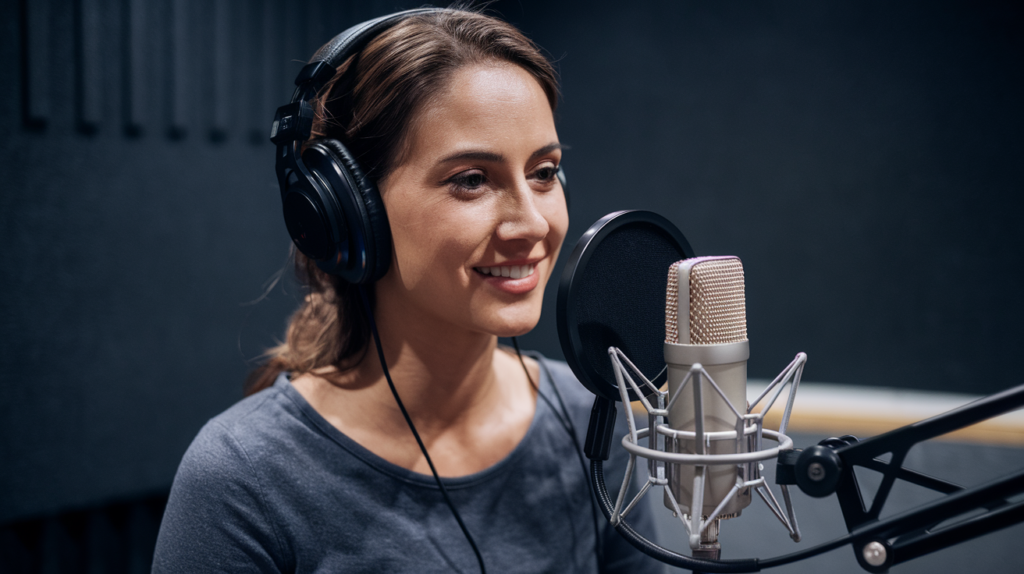Key Takeaways
- Regional Variations: Romanian language showcases significant differences in dialects and accents across regions, including Transylvania, Moldavia, and Wallachia, each with unique pronunciation styles.
- Geographic Influence: The diverse landscapes of Romania contribute to the distinct linguistic features found in various areas, affecting both urban and rural speech patterns.
- Sociolinguistic Factors: Historical interactions and migration patterns have shaped regional dialects, resulting in a rich tapestry of vocabulary and sound variations that enhance voice performances.
- Pronunciation Nuances: Pronunciation differences such as vowel changes and consonant clarity vary by region, impacting how effectively voice actors convey emotion and connect with audiences.
- Lexical Diversity: Regional vocabulary includes unique terms influenced by historical interactions with other cultures; understanding this helps voice talent deliver authentic performances relevant to specific audiences.
Ever wondered why Romanian sounds so different depending on where you are? The beauty of the Romanian language lies not just in its rich history but also in how it changes by region. From the vibrant accents of Transylvania to the melodic tones of Moldavia, each area adds its unique flavor to this fascinating language.
Geographic Overview of Romania
Romania’s geography plays a significant role in shaping the regional variations of the Romanian language. The country features diverse landscapes, including mountains, hills, and plains. These geographical distinctions contribute to unique dialects and accents across different areas.
Regions and Their Influence
Transylvania: Known for its picturesque mountains and historical significance, Transylvania hosts a blend of cultural influences. Here, you’ll notice distinct sounds in pronunciation, often characterized by softer consonants.
Moldavia: This region showcases a rich agricultural landscape. Moldavians tend to use more melodic intonations in their speech, reflecting the area’s vibrant traditions and folk music.
Wallachia: Predominantly flat with expansive plains, Wallachia has its own accent that is generally clearer and more direct compared to other regions. The straightforward nature of this area resonates through its communication style.
Urban vs. Rural Dialects
Urban centers like Bucharest exhibit influences from various regional accents due to migration and globalization. In contrast, rural areas maintain traditional language features that reflect local heritage. You might find that voiceover talent from these regions brings an authentic flavor to their performances based on their linguistic background.
Conclusion
Understanding how geography impacts language can enhance your appreciation for Romanian voice artists’ skills as they navigate these regional nuances effectively in their work.
Dialectal Variations
Romanian boasts a variety of dialects, each with distinct characteristics shaped by regional influences. These dialects enrich the language, making it more fascinating for voice artists and those seeking to understand its depth.
Transylvanian Dialects
Transylvanian dialects stand out due to their unique blend of linguistic influences from Hungarian, German, and Slavic languages. You’ll notice softer consonant pronunciations in this region, creating a melodic quality that many find appealing. For voice actors working with Transylvanian accents, mastering these subtleties can add authenticity to their performances. The use of specific local expressions also enhances the richness of the dialogue, captivating audiences.
Moldovan Dialects
Moldovan dialects are known for their musical intonations and expressiveness. This region’s vibrant traditions resonate through its speech patterns, making them particularly engaging for listeners. Voice talent who embrace these nuances often find themselves able to convey deeper emotional connections in their work. Understanding Moldovan expressions can elevate your projects by infusing them with cultural significance that resonates with native speakers.
Muntenian Dialects
Muntenian dialects offer a clearer and more direct accent influenced by the flat plains of Wallachia. This straightforward approach makes it easier for voiceover artists to communicate effectively while maintaining clarity in their delivery. Many urban centers reflect this clarity but may also incorporate elements from various regional accents due to migration patterns. By grasping the Muntenian style, you can enhance your versatility as a voice actor or artist—adapting seamlessly between different Romanian dialects can broaden your appeal in diverse markets.
Exploring these regional variations not only enriches your understanding of Romanian but also helps you connect more authentically with audiences when delivering compelling narratives or persuasive messages through voiceovers.
Sociolinguistic Factors
Understanding the sociolinguistic factors that shape the Romanian language provides valuable insights into its regional variations. These factors include historical influences and migration patterns, which contribute to the rich tapestry of dialects and accents across Romania.
Influence of History
Romania’s history plays a significant role in shaping its linguistic landscape. The country’s past interactions with various cultures—such as Hungarian, German, and Slavic—have left lasting marks on regional dialects. For instance, Transylvanian dialects reflect these influences through unique vocabulary and pronunciation styles. This historical blend creates distinct sounds that enhance voice performances by adding depth and character to each region’s voice talent.
Impact of Migration
Migration significantly impacts how Romanian evolves in urban versus rural settings. Urban areas like Bucharest attract people from diverse backgrounds, resulting in a mix of accents and dialects. In contrast, rural regions tend to preserve traditional speech patterns more closely. This variation not only affects everyday communication but also enriches the pool of voiceover talent available for projects. By understanding these migration-driven changes, you can appreciate how different accents can add authenticity to your next voiceover project or campaign.
Embracing these sociolinguistic factors not only enhances your understanding of Romanian but also aids in selecting the right voice artist who embodies the regional nuances that resonate with audiences effectively.
Pronunciation Differences
Romanian pronunciation varies significantly across regions, contributing to the richness of its dialects. These differences can impact how voice artists deliver their performances, affecting everything from tone to emotional resonance.
Vowel Changes
Vowel sounds in Romanian often change based on regional accents. For instance, in Transylvania, speakers may pronounce the vowel „e“ more open than in Moldavia, where it’s pronounced closer. This subtle shift can influence a voice actor’s delivery style and character portrayal. Similarly, some rural areas might emphasize short vowels, while urban centers could lean towards diphthongs. Understanding these nuances helps voice talent connect more authentically with audiences.
Consonant Variations
Consonants also exhibit notable variations throughout Romania. In Wallachia, consonants tend to be clearer and more direct compared to the softer pronunciations found in Transylvania. This distinct clarity is vital for effective communication in voiceovers. Additionally, certain regions may aspirate consonants differently; for example, you might hear a stronger „h“ sound in some dialects than others. These variations not only enhance the expressiveness of a performance but also allow voiceover actors to adapt their techniques according to regional preferences and expectations.
By recognizing these pronunciation differences among various Romanian dialects, you gain insights into how they shape effective storytelling through voiceovers.
Lexical Diversity
Lexical diversity in Romanian reflects the richness of regional vocabulary and influences how voice artists engage with their audience. Each region contributes unique words and expressions, impacting the nuances of communication.
Regional Vocabulary
Regional vocabulary varies significantly across Romania. For example, Transylvanian dialects often incorporate terms from Hungarian and German, enriching their lexicon. You might notice phrases that sound completely different from those used in Moldavia or Wallachia. This variation can create distinct storytelling techniques for voice actors, allowing them to adapt their delivery based on regional context. When you work with a voice talent familiar with these local nuances, expect more authentic performances that resonate better with specific audiences.
Borrowed Terms
Borrowed terms play an essential role in shaping Romanian’s lexical landscape. Historical interactions with various cultures introduced foreign words into everyday language. For instance, urban centers like Bucharest showcase a mix of borrowed languages due to migration patterns over time. Voice artists must grasp these borrowed terms to accurately convey meaning and emotion during recordings. The ability to navigate such linguistic diversity enhances a voiceover artist’s adaptability, making it easier for them to connect authentically with listeners across regions.
By understanding lexical diversity in Romanian, you empower your choice of voice talent—ensuring they deliver not just words but also the cultural essence behind them.
Conclusion
The regional variations of the Romanian language showcase its rich tapestry influenced by geography and history. Each area’s unique accents and dialects not only reflect local culture but also enhance storytelling through voiceovers. Understanding these differences allows you to appreciate the linguistic diversity that shapes communication in Romania.
Whether you’re drawn to Transylvania’s melodic qualities or Wallachia’s clarity, recognizing these nuances can elevate your connection with the language. As Romania continues to evolve, so too will its dialects, making it vital for voice artists and enthusiasts alike to stay attuned to this dynamic linguistic landscape. Embracing these regional traits enriches both artistic expression and cultural appreciation.
Frequently Asked Questions
What are the main regional variations of the Romanian language?
The Romanian language has several regional variations, notably in Transylvania, Moldavia, and Wallachia. Each region features distinct accents and dialects influenced by cultural interactions and geography. For example, Transylvanian dialects show influences from Hungarian and German, while Moldavian intonations reflect local traditions.
How does geography affect Romanian dialects?
Romania’s diverse geography, with its mountains, hills, and plains, significantly impacts regional dialects. The landscape shapes pronunciation styles; for instance, Wallachia’s flat terrain leads to a clearer accent compared to the melodic tones found in mountainous regions like Transylvania.
What is unique about Moldavian accents?
Moldavian accents are characterized by their melodic intonations that mirror the region’s vibrant cultural traditions. This musicality enhances emotional expression in voice performances, allowing speakers to connect deeply with their audience through storytelling.
How do urban centers influence Romanian accents?
Urban areas like Bucharest exhibit a blend of various regional accents due to migration patterns. This mixing creates a dynamic linguistic environment where traditional speech characteristics may be softened or altered as different cultures interact within cities.
Why is understanding pronunciation important for voice artists?
Understanding pronunciation differences among various Romanian dialects is crucial for voice artists as it affects tone and emotional delivery. Variations in vowel sounds and consonant clarity can enhance storytelling effectiveness and audience connection during performances.
What role does history play in shaping Romanian dialects?
Romania’s complex history has profoundly influenced its language. Historical interactions with different cultures have left marks on regional dialects—particularly in Transylvania—creating a rich tapestry of linguistic diversity that informs modern speech patterns.
How does lexical diversity impact storytelling in Romanian?
Lexical diversity enriches storytelling by providing unique vocabulary specific to each region. For instance, Transylvanian terms borrowed from Hungarian or German can create distinct narrative techniques for voice actors, enhancing authenticity and engagement with audiences through culturally resonant expressions.







